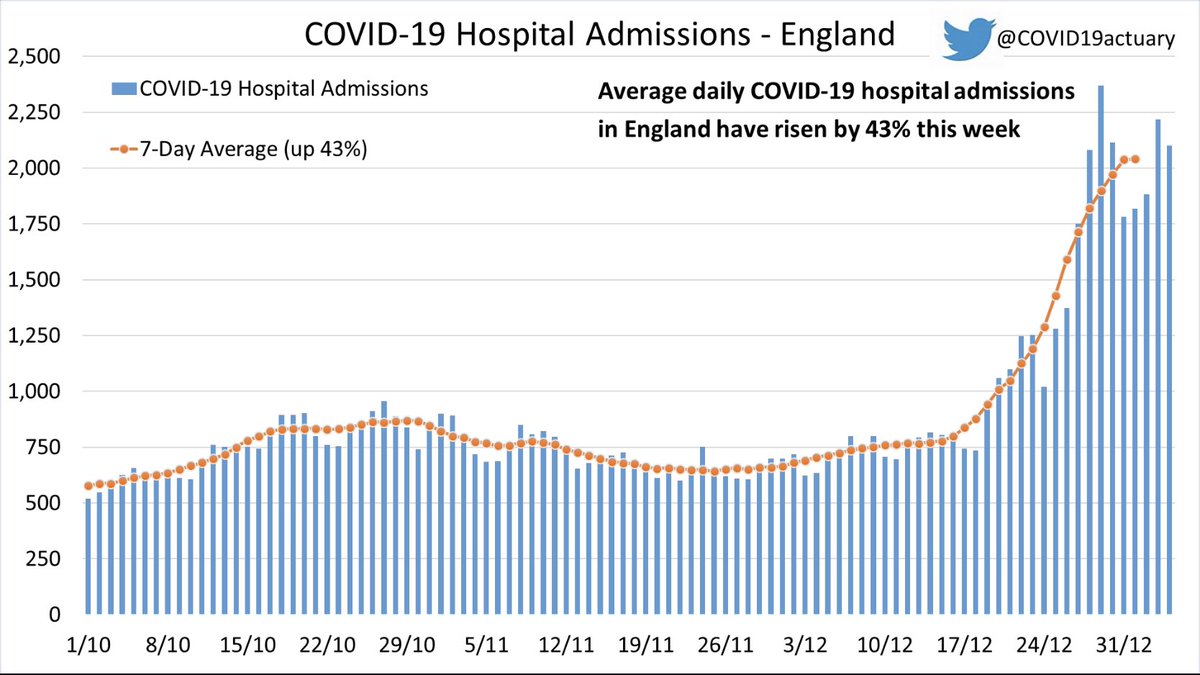A fuller update on hospitals in England today, including admissions by age and hospital deaths.
Nationally, admissions with COVID are up by 43% week-on-week, but the rate of growth has slowed significantly. Today’s total is very similar to the total reported a week ago. 1/6
Nationally, admissions with COVID are up by 43% week-on-week, but the rate of growth has slowed significantly. Today’s total is very similar to the total reported a week ago. 1/6

The regional picture is very mixed but growth has been slower everywhere. The change is most pronounced in London, where the 7-day average has fallen in recent days. The fastest growth has been the North West, up 84%. 2/6 

Breaking down admissions by age, the 18-64 age group has fallen in the last few days. The older age groups are still increasing but there are signs that the pace has slowed for these too. 3/6 

This chart compares actual hospital admissions with modelled scenarios produced by SPI-M-O teams, including a recent update from @cmmid_lshtm to incorporate Omicron. If there is no further uptick in admissions then the peak will be lower than the modelled scenarios. 4/6 

COVID-19 hospital bed occupancy in England is now above 16,000 beds occupied. Mechanical Ventilation bed occupancy is down by 3% week-on-week, while other bed occupancy is up by 43%. The proportion of COVID patients in mechanical ventilation beds is the lowest it has been. 5/6 

COVID-19 deaths in English hospitals increased by 25% week-on-week.
With COVID prevalence so high this will include more who people who died of other causes, but with COVID, than usual.
Purple estimates are based on the pattern of reporting delays in the last two months. 6/6
With COVID prevalence so high this will include more who people who died of other causes, but with COVID, than usual.
Purple estimates are based on the pattern of reporting delays in the last two months. 6/6

• • •
Missing some Tweet in this thread? You can try to
force a refresh




















